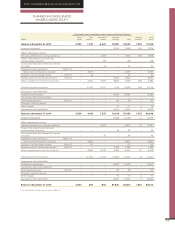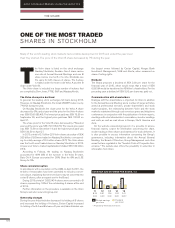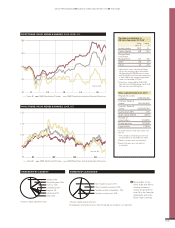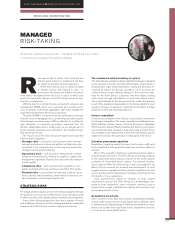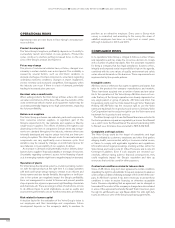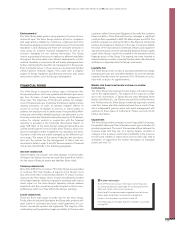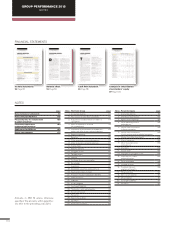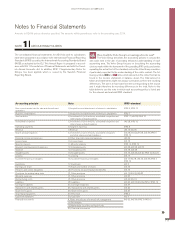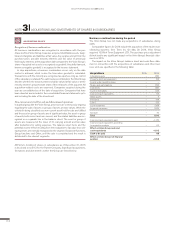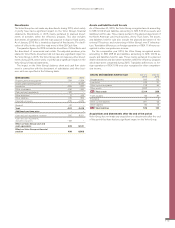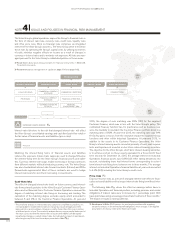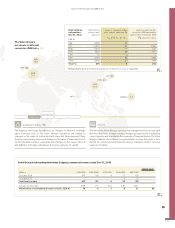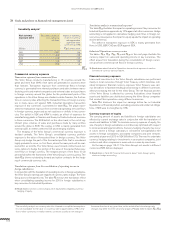Volvo 2015 Annual Report Download - page 114
Download and view the complete annual report
Please find page 114 of the 2015 Volvo annual report below. You can navigate through the pages in the report by either clicking on the pages listed below, or by using the keyword search tool below to find specific information within the annual report.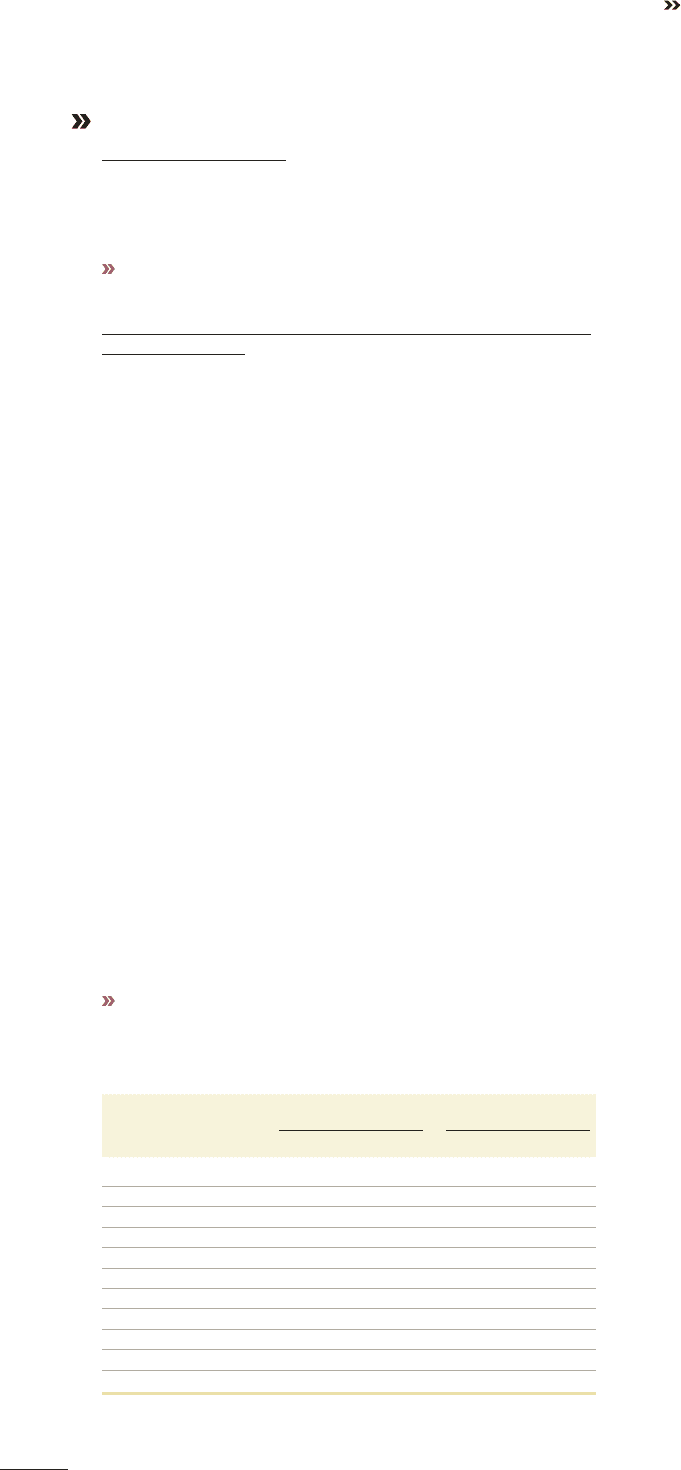
Consolidated financial statements
Principles for consolidation
The consolidated financial statements comprise the parent company, sub-
sidiaries, joint ventures and associated companies. Intra-group transac-
tions as well as gains on transactions with joint ventures and associated
companies are eliminated in the consolidated financial statements.
Read more in note 5 about definitions of subsidiaries, joint ventures, and
associated companies.
Translation to Swedish kronor when consolidating companies have other
functional currencies
The functional currency of each Volvo Group company is determined
based on the currency in which the company primarily generates and
expends cash, normally the currency of the country where the company is
located. AB Volvo’s and the Volvo Group’s presentation currency is SEK. In
preparing the consolidated financial statements, items in the income
statements of foreign subsidiaries (except for subsidiaries in hyperinflation-
ary economies) are translated to SEK using monthly average exchange
rates. Balance-sheet items are translated into SEK using exchange rates
at year-end (closing rate). Exchange differences are recognized in other
comprehensive income and accumulated in equity.
The accumulated translation differences related to a certain subsidiary,
joint venture or associated company are reversed to the income statement
as a part of the gain/loss arising from disposal of such a company or
repayment of capital contribution from such a company.
Receivables and liabilities in foreign currency
Receivables and liabilities in currencies other than the functional currency
of the reporting entity (foreign currencies) are translated to the functional
currency using the closing rate. Translation differences on operating
assets and liabilities are recognized in operating income, while translation
differences arising in financial assets and liabilities are recognized in
financial income and expenses. Interest-bearing financial assets and lia-
bilities are defined as items included in the net financial position of the
Volvo Group (see Definitions at the end of this report). Exchange rate
differences on loans and other financial instruments in foreign currency,
which are used to hedge net assets in foreign subsidiaries and associated
companies, are offset against translation differences in the shareholders’
equity of the respective companies. Exchange-rate gains and losses on
assets and liabilities in foreign currencies, both on payments during the
year and on measurements at year-end, impact profit or loss in the year in
which they are incurred.
Read more in note 4 about currency exposure and currency risk management.
The most important exchange rates applied in the consolidated financial
statements are shown in the table.
Exchange rates Average rate Closing rate
as of Dec 31
Country Currency 2015 2014 2015 2014
Australia AUD 6.3377 6.1801 6.0861 6.3746
Brazil BRL 2.5643 2.9202 2.1596 2.8903
Euro Zone EUR 9.3638 9.1059 9.1443 9.5248
Japan JPY 0.0697 0.0649 0.0694 0.0654
Canada CAD 6.6054 6.2122 6.0293 6.7231
China CNY 1.3424 1.1134 1.2868 1.2595
Norway NOK 1.0469 1.0904 0.9567 1.0526
Great Britain GBP 12.9042 11.2976 12.3848 12.1451
South Africa ZAR 0.6641 0.6320 0.5433 0.6722
South Korea KRW 0.0075 0.0065 0.0071 0.0071
United States USD 8.4370 6.8582 8.3537 7.8130
New accounting policies for 2015
There are no new accounting principles and interpretations that came into
effect as of January 1, 2015 that significantly effects the Volvo Group’s
financial statements.
New accounting policies for 2016 and later
A number of accounting standards and interpretations have been pub-
lished, but have not yet become effective.
IFRS 9 Financial instruments
IFRS 9 is divided in three parts: Classification and Measurement, Im -
pairment and Hedge Accounting, and will replace the current IAS 39
Financial instruments: recognition and measurement. The Volvo Group is
currently assessing the effect of IFRS 9 and are expecting the greatest
impact from the transition to the new expected credit loss model, however
the impact is not yet quantifiable. The mandatory effective date is January
1, 2018, with earlier application allowed.
IFRS 15 Revenue from Contracts with Customers
IFRS 15 represent a new framework for recognising revenue with addi-
tional disclosure requirements. The framework establishes principles
about the nature, amount, timing and uncertainty of revenue and cash
flow arising from an entity’s contracts with customers. IFRS 15 will replace
current IAS 11 Construction contracts and IAS 18 Revenue. The Volvo
Group is assessing the impact of the IFRS 15 and monitors any state-
ments from the IASB and FASB Joint transition resource group for reve-
nue recognition as well as amendments to the standard. Areas in focus
for the Volvo Group are for example accounting for repurchase commit-
ments and service contracts, where the guidance in IFRS 15 is more
explicit than under IAS 18. The mandatory effective date is January 1,
2018, with earlier application allowed.
IFRS 16 Leases
IFRS 16 Leases was published in January 2016 and are replacing the
former IAS 17 Leases and the related interpretations IFRIC 4, SIC-15 and
SIC-27. The accounting for lessors will in all material aspects be
unchanged, however the accounting for lessees will change. There will no
longer be a distinction between operating and finance lease, all leases
will be recognized on the balance sheet except for short-term leases and
those of minor value. The model reflects that, at the start of a lease, the
lessee obtains the right to use an asset for a period of time and has an
obligation to pay for that right. The standard is effective for annual periods
beginning on or after 1 January 2019. Early adoption is permitted. Volvo
Group will assess the impact of IFRS 16, however it can already now be
concluded that the balance sheet for Volvo Group will increase.
IFRS 9, IFRS 15 and IFRS 16 has not yet been adopted by the EU when
this Annual Report is published.
Other new or revised accounting standards are not considered to have
a material impact on the Volvo Group’s financial statements.
GROUP PERFORMANCE 2015 NOTES
112



